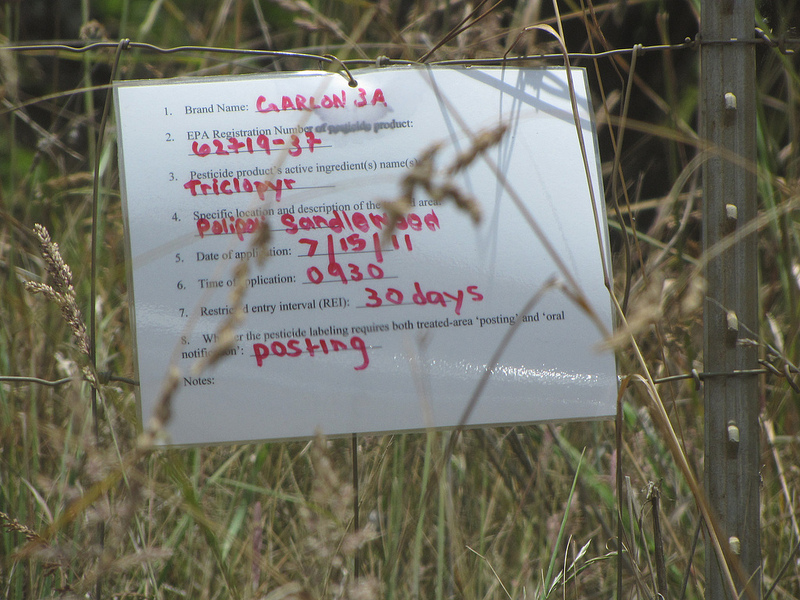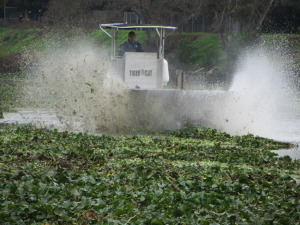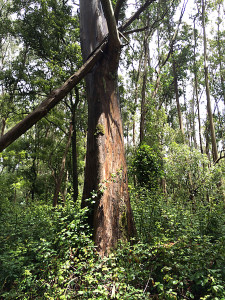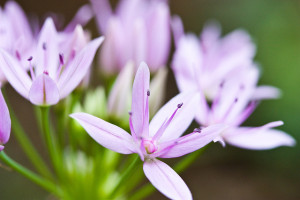In this installment from Bay Nature’s Ask the Naturalist series, we address the thorny issue of whether to use herbicides on invasive plants.
Question: I have a few (fairly young) invasive trees growing in my garden. I would like to kill them by drilling holes in their trunks and injecting Roundup. Will this method work and is there any danger of contaminating the surrounding soil?— Jocelyn Gibson, Oakland
Provided by Lech Naumovich, botanist and Executive Director of the Golden Hour Restoration Institute
An herbicide is a very powerful, albeit controversial tool. Certain invasions are nearly impossible to treat without herbicide, but I always make sure I’ve considered all other non-chemical modes of treatment first. When applied correctly by a professional, industry-driven research demonstrates that many common herbicides have minimum long lasting effects in natural systems. Notably, there are also certain herbicides that are extremely toxic to both people and our natural environment.
Herbicide by-products (when the active compound breaks down) are less frequently studied and many opponents believe by-products can be more toxic than the EPA-approved active ingredient. It would be against my better judgement to predict herbicide movement and biochemical pathways in living systems. What we do know is that many herbicides have surfactants (in addition to the active ingredient and byproducts) that have well known, widespread impacts on biological systems. All this is to say that herbicides are powerful tools to be wielded with extreme care.
Herbicide selection, timing and the target plant are the key variables to consider. I see about 90% of errors occur at this planning stage, wherein the wrong herbicide is selected, or timing is poorly planned. In my experience, applying herbicide at the incorrect time in the plant’s life cycle is the most common error amateur applicators make. I recommend you contact a professional who can identify your weed problem, is well-learned on various treatment techniques, and knows how to effectively apply the herbicide if that is the recommended course of action. In fact, you may not even require the use of herbicide for proper control of a target species. I would contact the California Invasive Plant Council for leads on local professionals.
Please be safe and extremely mindful with herbicides as their misuse is known to cause grave environmental impacts including damaging aquatic systems and impacting adjacent plants with poorly targeted application. Hiring a knowledgeable professional may end up saving you money, reducing environmental impact, and making your treatment more successful.
Additional Resources:
- The Weed Workers Handbook for specific treatments on Bay Area weeds (PDF)
- UC Davis’ Integrated Pest Management Program’s guidelines for how to manage common California weeds.
- Biological Effects of Surfactants by S.A. Ostroumov, published by CRC Press.





-300x224.jpg)